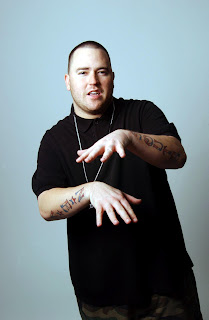Final Blog: Musical Thesis
I have chosen to do my final blog project on how music can connect people emotionally.
I have chosen two songs to help me present my thesis.
Firstly, Jolene by Dolly Parton. Written and recorded by Dolly and released in 1973, USA.
https://www.youtube.com/watch?v=Ixrje2rXLMA
Next, The House That Built Me by Miranda Lambert. Written by Tom Douglas and Allen Shamblin, recorded by Miranda, and released in 2010, USA.
https://www.youtube.com/watch?v=DQYNM6SjD_o
Music is a universal language that transcends barriers, connecting individuals emotionally regardless of cultural, linguistic, or geographical differences. Through its melodies, expressive lyrics, and rhythms, music can bring out a lot of emotions, fostering empathy, understanding, and shared experiences among people from diverse backgrounds. Music is one way to get your feelings across to someone, even if you can't find the words yourself.
People will often use the words feelings and emotions interchangeably, but in reality, they are two different concepts. Emotions come from sensations from the body, whereas feelings come from our mind. When we listen to music, it stimulates multiple different parts of our brain, which in turn takes a few seconds to manifest as emotions, and in turn, will affect our feelings. Researchers have found that music can influence the emotional ratings of our faces. When we listen to happy music, our faces show the happiness. When we listen to more sad music. our faces show that with a frown. Just like visual signs can affect our emotions, our auditory signs can do the same exact thing.
Jolene by Dolly Parton has a faster tempo, and the music is more upbeat, even though the lyrics tell a different story. She talks about her husband wanting another woman and talking about her in his sleep, and Dolly is begging her to not take him because he is all she has.
The House That Built Me by Miranda Lambert has a slower tempo, and the music is more laid back. The lyrics are somewhat sad and have a solemn tone. She talks about going back to her childhood home in hopes of looking around one more time, to try and mend the "brokenness" inside of her, and she talks about how her favorite dog is buried in the front yard, and how the handprints on the front steps are hers.
Both of these songs have always been two of my favorites, and the part in Miranda's song about the dog still makes me tear up sometimes, because my favorite dog is also buried in my yard, and I dread the day I have to leave the house and leaving him behind. I never skip these songs when they come on, and I think they are truly musical masterpieces.
Over this semester, I feel like my relationship with music has grown so much. I feel I'm able to make deeper connections with what I'm listening to and able to analyze them much better. I'm able to enjoy the music more now that I know more about it. I'm very happy I took this class and strengthened my relationship with music.
Sources
Changizi, Mark. “Why Does Music Make Us Feel?” Scientific American, 20 Feb. 2024, www.scientificamerican.com/article/why-does-music-make-us-fe/.
Sound of Life. “The Connection between Sound and Feelings: Sound of Life: Powered by Kef.” Sound of Life, www.soundoflife.com/blogs/experiences/emotions-from-music. Accessed 28 Apr. 2024.




Comments
Post a Comment